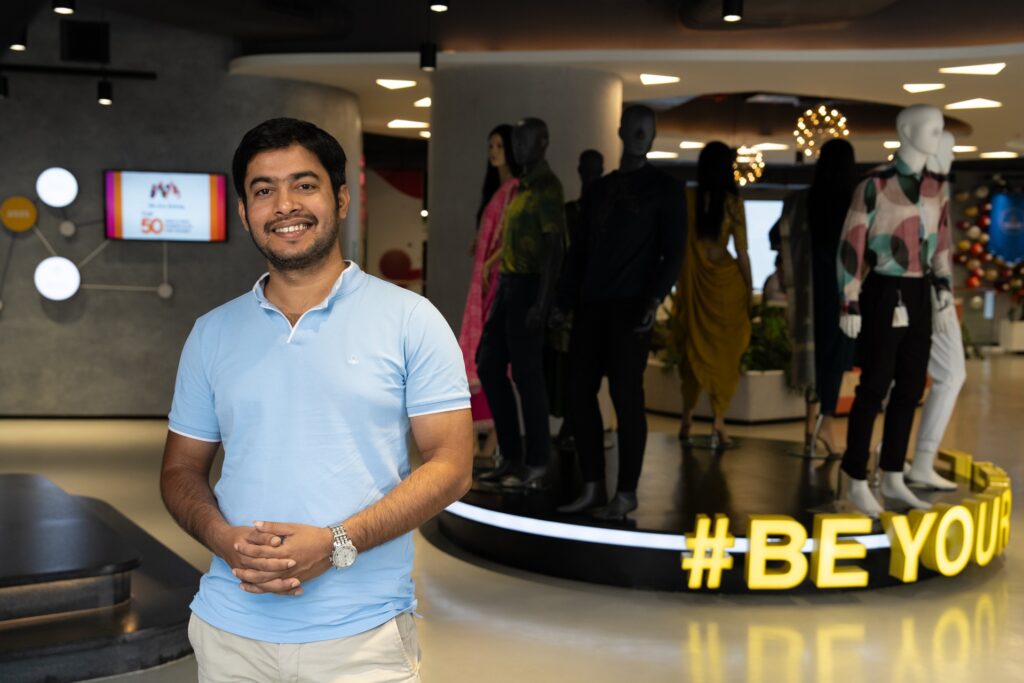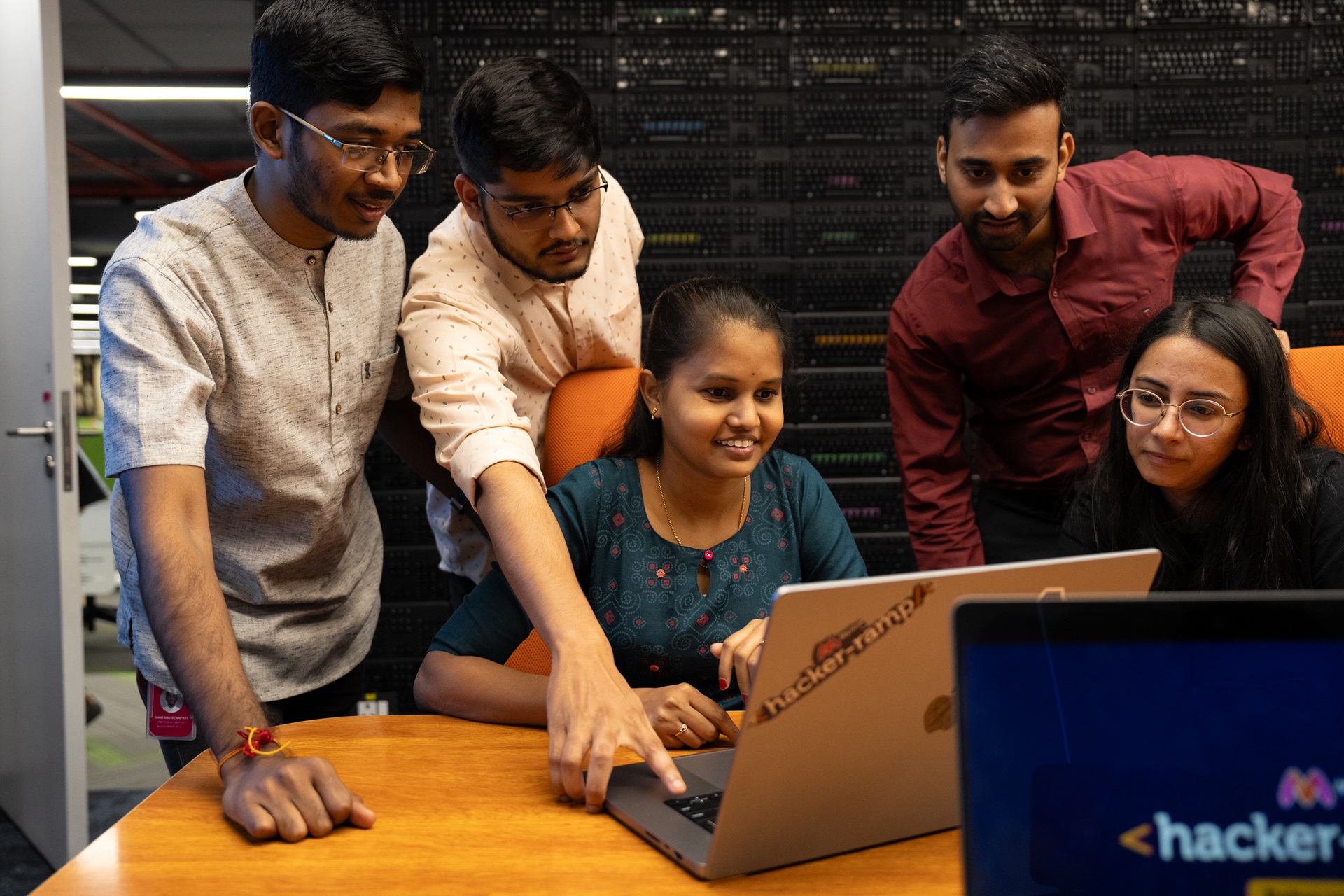Bengaluru, Karnataka, INDIA: For someone pushing 40, stepping into a gym for the first time can be a nerve-wracking experience.
As this writer realized, even before self-doubts crept in about their chances of surviving an hour at the gym, the larger looming question was what to wear and not look out of place.
With absolutely no idea what they were looking for, this writer turned to an AI shopping assistant by Myntra, India’s biggest online fashion retailer, and typed, “I’m looking for clothes I can wear to work out in the gym.”
Surprisingly, the AI assistant understood exactly what this writer needed and came up with jerseys that would wick off sweat, compression t-shirts, self-proclaimed comfortable trackpants that wouldn’t restrict movement, shoes that could make you run better, fitness bands and all sorts of gear a newbie couldn’t have imagined they wanted or needed.
With the shopping cart full and the wallet significantly empty, this writer was ready for a new beginning.
What the AI assistant did – convert an abstract user query into actionable results – is game changing for the fashion industry. Conventional search works best with specific keywords – a blue t-shirt from a particular brand, say.
It goes a few steps beyond conventional search. It uses generative AI to respond to more open-ended questions like what to wear for a particular festival or a cricket match or even the trending fashion in a city.
“This is big,” said Arit Mondal, director of product management at Myntra, “Why? Because, this is the first time we have a solution, which is solving the unsolved ‘search’ problem in the fashion, beauty and lifestyle industry. And it’s live for customers at scale.”

Since the beginning of online fashion retail, searching for products has been very similar to searching for any other piece of information online. You try a set of keywords and keep refining your search with different keywords and preset filters.
A search for a branded, blue t-shirt works well because the keywords are already part of the product catalog.
But that’s not always how people shop in the real world. Some shoppers only have a vague idea what they want – for instance, clothes for an upcoming vacation or a rock concert.
The conventional method of searching by keywords fails spectacularly when it comes to the second kind of customer as the search strings they use are not retrievable directly from the information stored in the product catalog.
Until now.
When generative AI – built on large language models (LLMs) that synthesize vast troves of data to generate, text, images and more – first made news last year, the team at Myntra quickly began thinking about how they could leverage it to enhance customer experiences.
When Myntra organized a hackathon in February this year, a group of engineers from the company’s search team decided to use Azure OpenAI Service to solve the abstract search problem and unshackle users from the cuffs of keywords.

They were pleasantly surprised to see how ChatGPT, the generative AI service available through Azure OpenAI Service, could synthesize natural language prompts. They asked ChatGPT about the look of an actor from a recent movie and it could tell it consisted of a bomber jacket, gloves and aviator sunglasses.
“And this is the information that Myntra’s existing catalog didn’t have,” said Swapnil Chaudhari, an engineering manager at Myntra.
Over two days, his team took over a conference room and kept trying new prompts – text that generative AI could understand – to see what results they got. This was new territory – and they didn’t know how far they could push.
“We were surprised to see the results. It was able to answer questions like clothes to wear for regional festivals like Pongal and Onam,” said Pragna Kanchana, a frontend engineer at Myntra.
On a whim, she tried to search in Hindi with sardiyon ke kapde, which in English translates into winter clothes. And it understood it!
The team then got access to Azure OpenAI Service’s playground that let them do much more than was possible with ChatGPT alone.
“Leveraging Azure OpenAI Service, we were able to plug in different large language models in the same prompt and figure out which model worked best for our use case. So, we had a lot of freedom to compare and choose the right model,” explained Santanu Kanchada, a backend engineer in the search engineering team.
The team knew they were on to something big. They wrote the code in a day, and within two days they had a working prototype of a new feature that enabled users to search with natural language.
“If it were not for GPT models, we’d have to first retrain the model using Myntra’s catalog and then wait and check the results with our expectations. But the pre-trained models already available with Azure OpenAI Service were already performing quite well,” added Chaudhari.
Over the next five weeks, multiple teams across engineering and product development fine-tuned both the backend and the user interface for the AI shopping assistant.
“Myntra’s systems are on Azure and deploying Azure OpenAI Service was as seamless as deploying another server and it gave us a secure way of using generative AI,” explained Vindhya Priya Shanmugam, director of engineering at Myntra.

Post the hackathon, the search engineering team kept refining the prompts to get useful outcomes for users. One of the problems, for instance, was how to ensure that the response to a user’s query resulted in clothes for only the gender the user is looking for.
In the weeks leading to the launch, they trained the system on Myntra’s catalog and added guardrails so the results were limited to the catalog.
The AI shopping assistant was launched on the Myntra app in late May, just in time for one of their biggest marquee events, End of Reason Sale (EORS). It included sample prompts that gave users an idea of how they could use conversational language rather than keywords.
Since then, Myntra has already seen search queries broaden, offering new opportunities for product discovery. For instance, when someone searches for clothes they can wear to a beach, not only beach wear but also accessories like hats, sunglasses and footwear pop-up.
It has been phenomenal for Myntra.
“Users who shop using the AI shopping assistant are three times more likely to end up making a purchase,” said Mondal. “Because it also helps users discover a complete look from multiple categories of products, we’re seeing that on average they add products from 16 percent more categories than usual.”
While this writer’s fitness transformation journey is still questionable, multiple teams at Myntra are already building new features based on generative AI.
One of them will allow users to choose different categories of products – tops, bottoms and accessories, for example – and see how they look together in an outfit. Myntra plans to further enhance it by introducing voice search and provide personalized results. They are also looking at how they can use generative AI to help the customer support teams.
Top image: Myntra’s AI shopping assistant powered by Azure OpenAI Service lets shoppers discover a complete look using natural language prompts that can include places, festivals, or other occasions. Photo by Selvaprakash Lakshmanan for Microsoft.

